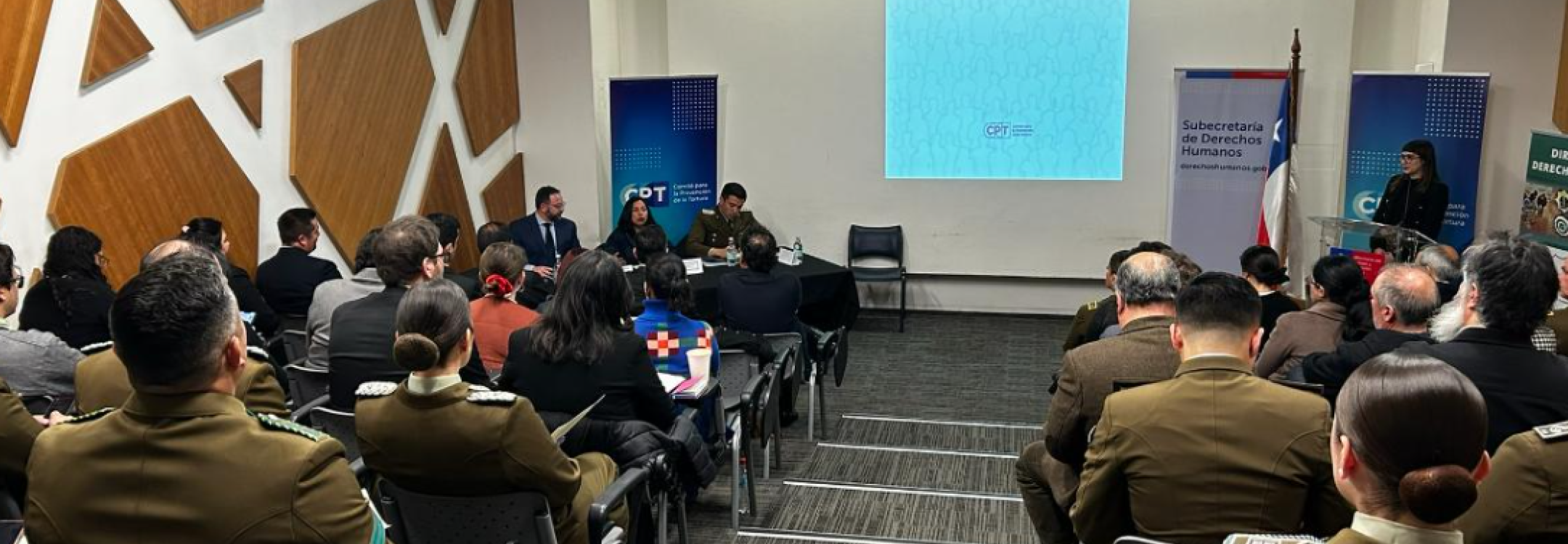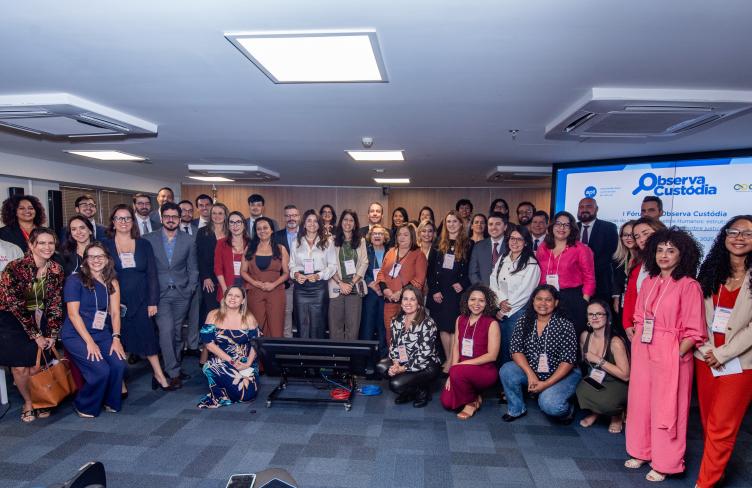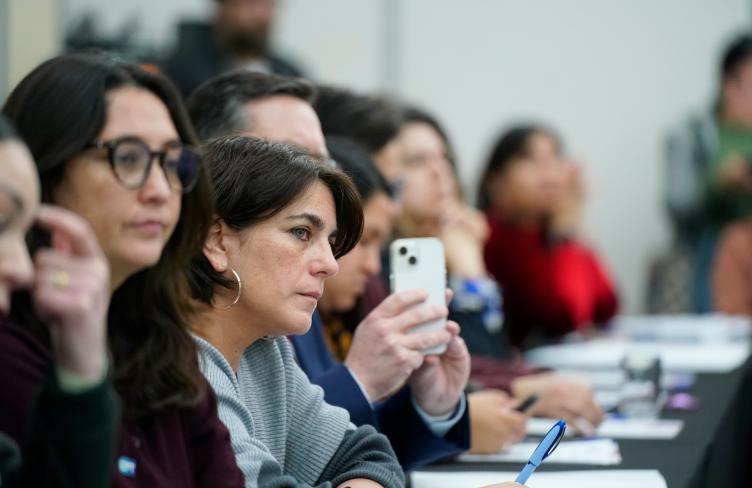
The first moments of detention—often the most tense and when persons are most at risk of torture and ill-treatment—are receiving heightened attention in Chile. Recognising this critical vulnerability, the Committee for the Prevention of Torture (CPT), in collaboration with Carabineros de Chile and with support of the Association for the Prevention of Torture (APT), has developed a pioneering Monitoring Guide. This initiative marks the first systematic approach in Latin America to turn preventive monitoring into concrete safeguards for detainees, reinforcing human rights protections and ensuring access to justice from the very start of police custody.
The Monitoring Guide for the Prevention of Torture in Police Custody, was designed primarily for those engaged in monitoring police detention—such as preventive mechanisms, National Human Rights Institutions, and human rights units within police forces—this guide provides a practical framework to ensure that, in the critical first hours following an arrest, security measures are implemented in full respect of the dignity and rights of persons deprived of liberty.
Why is this guide a must-read for the field of torture prevention?
First, the guide incorporates police perspectives, shedding light on the complex mandate of National Preventive Mechanisms (NPMs)—a mandate that moves beyond mere reactivity toward constructive dialogue and proactive engagement. It highlights how police officers understand the NPM’s role and how they have creatively begun to implement its recommendations.
Second, it sets out a collaborative dialogue-based methodology that fosters constructive engagement between monitors and police officers—essential for implementing meaningful changes.
The Guide was launched on July 29, 2025, bringing together high-level officials, including Luis Cordero Vega, Minister of Public Security, and Daniela Quintanilla, Secretary of Human Rights. Both emphasised the importance of maintaining and expanding robust monitoring efforts in police custody.
“This is the first time in Latin America that a complete line of work has been systematised—from visit methodologies to concrete outcomes." "Grounding the guide in local realities gives it immense institutional value” said Sara Vera, APT Regional Representative.
The Guide is the culmination of four years of collaborative work between the CPT’s police oversight team and Carabineros de Chile. It reflects accumulated lessons learned and institutional transformations driven by ongoing technical and constructive dialogue. Importantly, the document details concrete practices implemented to prevent risks of torture and ill-treatment within police units nationwide.
By detailing replicable practices, the guide offers a model for other countries in the region to enhance police oversight, build trust between monitors, lawmakers and the police, and ensure compliance with international human rights standards.
This publication would not have been possible without the dedication and expert knowledge of its authors, the CPT police monitoring team, a specialised team dedicated to monitoring police custody, carrying out regular visits to facilities across the country, Carabineros de Chile, and the APT. Their joint commitment to rigorous preventive monitoring and institutional dialogue has been fundamental to the emergence of this initiative, especially in a challenging context for Latin America.



